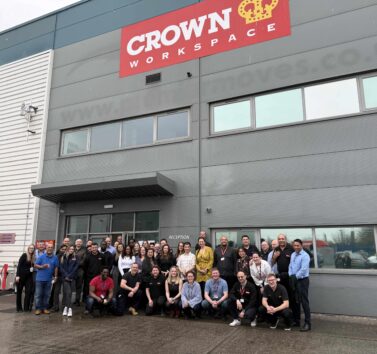The recent event to discuss the Future of Work held at the Tate Britain overlooking the River Thames reminds us of the historic link the river has played in facilitating international trade and the city’s growth. This link ties directly into the role of global mobility and the key focus areas to support organisations to navigate the future of work while ensuring compliance with a positive employee experience. Post the global pandemic, much has changed with the advances in technology and AI to increase efficiencies and navigate how businesses and workspaces have evolved.
With a very positive afternoon of insightful discussions and networking, co-hosted by Mercer, we would like to share some key takeaways.
Opening the sessions, our guest speaker, Marcus Downing, Partner, Workforce & Organisational Transformation at Mercer, spoke about critical areas for the future of work being the Employee Value Proposition (EVP), AI & Digital, and Environment, Social & Governance (ESG) considerations, and how this is evolving in the war for talent – to both recruit and retain. It is necessary to automate standard processes via AI to ensure efficiency. However, the human connection will always be essential to the employee experience.
The panel interviews with our guests Kim Woodlock of Smith + Nephew, Leane Harding of Deloitte UK and Sally Flaxman of Remote provided vital insights into their programs.
Work-From-Anywhere (WFA) policy and strategy:
The work-from-anywhere policy is separate from annual leave. It allows employees to take up to 20 days a year to minimise any tax risk and to support employees who wish to work remotely or from various locations.
The consensus for any long-term WFA requests was that companies require employees to have the right to work in their desired location for remote working.
An alternative option for supporting the WFA requests while ensuring client compliance is the employer-of-record (EOR) option. They use an EOR organisation with in-house legal and tax consultants, immigration specialists, payroll specialists, and benefits teams in each country where they have entities. The ability to support global expansion, talent development and retention is a crucial driver for an EOR’s services where an organisation needs a registered presence.
Integrating Diversity, Equity, and Inclusion (DEI) within policy and global mobility strategy:
While organisations have diverse populations, the policy does not explicitly address DEI but aims to provide flexibility for all employees.
Review policy language to avoid gender-specific terms and utilise experience gained in relocating diverse families, including same-sex couples, adopted children and more.
One of the panellists’ has engaged with employee inclusion groups to gather input on what’s important to them, intending to adapt policies accordingly to support those specific concerns or requirements where possible.
Inclusive benefits to consider may include care allowances for those with elderly parents, for example, travel allowances rather than home leave trips, additional home leave, and support for dual career families with a particular focus on commuter assignments where one partner is left to carry the family duties.
The selection of mobile employees should align with DEI guidelines for job posting, interviewing, and selection.
Using global mobility as a talent development opportunity:
One panellist is implementing a tool to identify critical experiences required for leadership roles and help employees plan their development and access resources for gaining the necessary skills, including how global mobility can support them in achieving those experiences.
The goal is to pilot the tool with senior management and eventually make it available to younger talent, helping their development and retention within the organisation.
Another panellist, whose organisation is fully remote, found that their model was a crucial driver in recruiting talent while not being limited by geographic constraints.
Two round table discussions followed focused on the following:
Session 1 discussed what companies have achieved due to changes following the pandemic and remote work, the following steps, and the barriers to implementing flexible mobility policies.
Session 2, led by Kate Fitzpatrick, Global Mobility Practice Leader UKI and Michael Grover, Principal Consultant, Global Mobility & Legal Industry, provided an overview of the latest Mercer study regarding policy allowances and usage for short-term assignments and permanent relocations.
What followed was discussions regarding how companies have set up flexibility within their policies and the challenges in introducing flexibility while retaining duty of care and compliance and supporting the employee experience. Interestingly, the consensus was that it is essential to ensure that mobility and talent are in sync. Several organisations confirmed that only a tiny proportion of relocations are talent development related, with most being business critical or project skills specific.
Session 1 – achievements to support the future of work next steps:
- In reviewing their policies together with talent plans, some organisations established new programs to support a younger and more agile workforce.
- While many have some form of remote work attached to holiday leave, this varies between 10 – 30 days.
- One company established a 20-day remote work option via an IT platform for remote work requests with built-in compliance features and a chatbot to review individual options and eligibility.
- Companies are reviewing their talent plans and impacts to align global mobility to support remote working options.
- The plans make working from any location easier, reviewing policies, and identifying and addressing potential risks and obstacles.
- Key challenges include the need for leadership to understand the balance between compliance requirements and business needs.
Session 2: Flexibility of policies for Lump Sum and permanent relocations next steps:
- Companies across all program sizes are adapting their mobility policies to increase flexibility.
- Vendor partners manage lump sums, but concerns arise over their use, mainly if there is a cash-out and the impact on employee experience.
- Employee experience and engagement are essential, and compliance can be a crucial barrier.
- Mobility and talent often need to be connected within organisations.
- The promotion of remote work supports the talent argument for working from anywhere.
- The talent strategy should be aligned with global mobility and have a designated relocation budget.
- For flexible policies, the emphasis is on enhancing the employee experience and ensuring engagement throughout the process.
- Compliance and duty of care are significant barriers to implementing flexible mobility policies.
- Partnering with relocation experts to manage core and choice items in mobility policies was emphasised for a positive employee experience and compliance.
It was an insightful and engaging afternoon with shared challenges and accomplishments across various industries and program sizes. We look forward to future sessions together and growing our expertise as business practices and workspaces evolve to accommodate the future of work.




